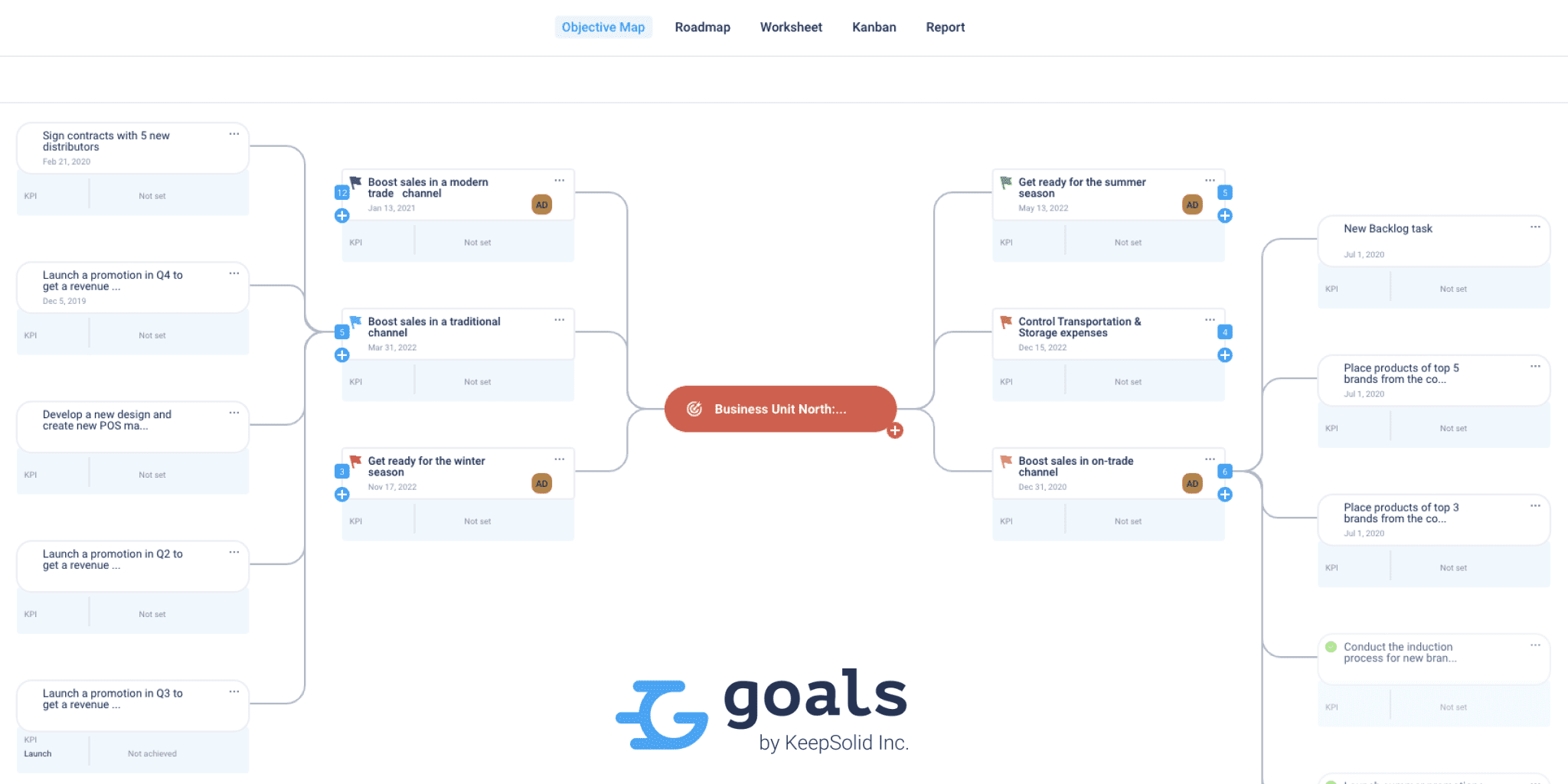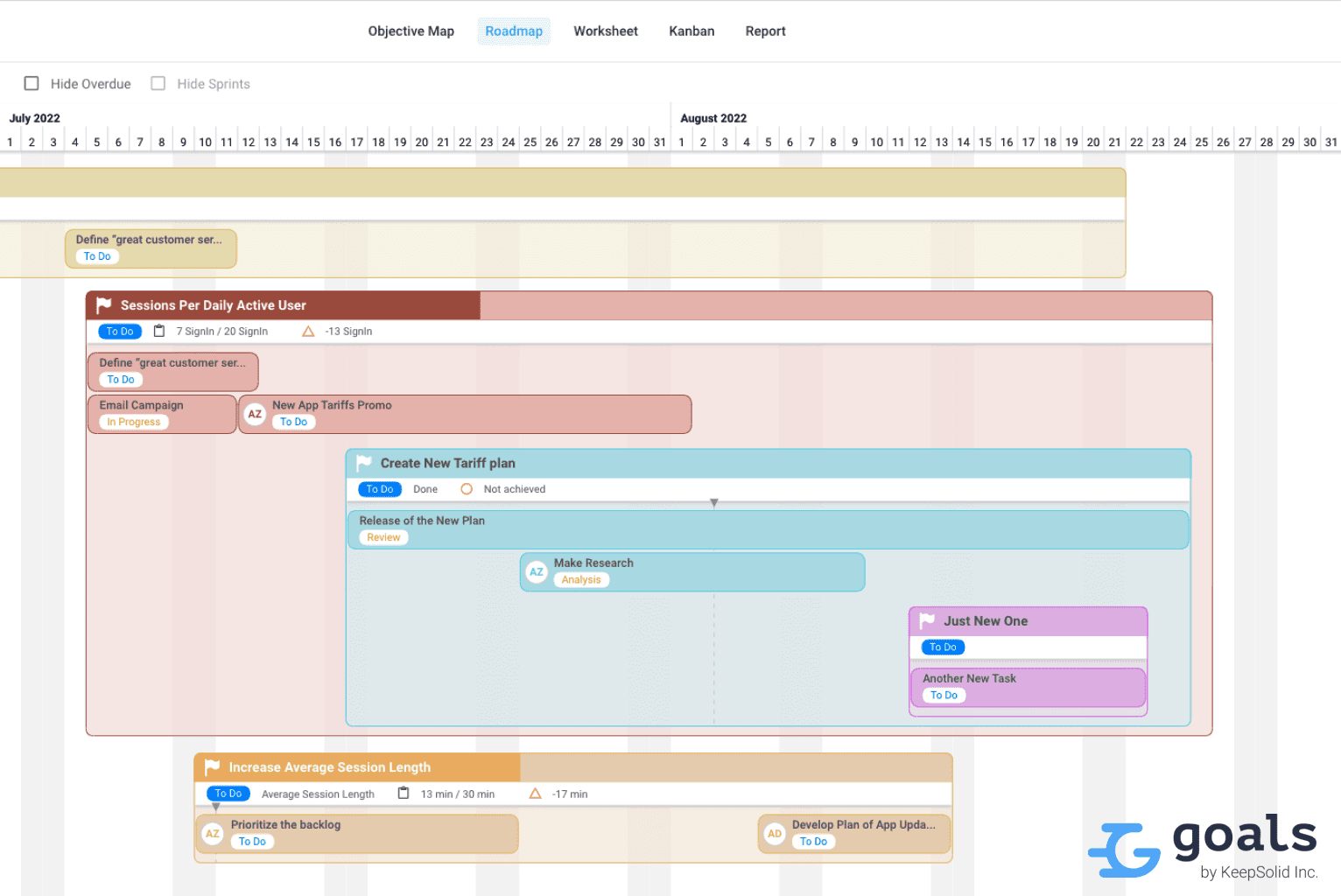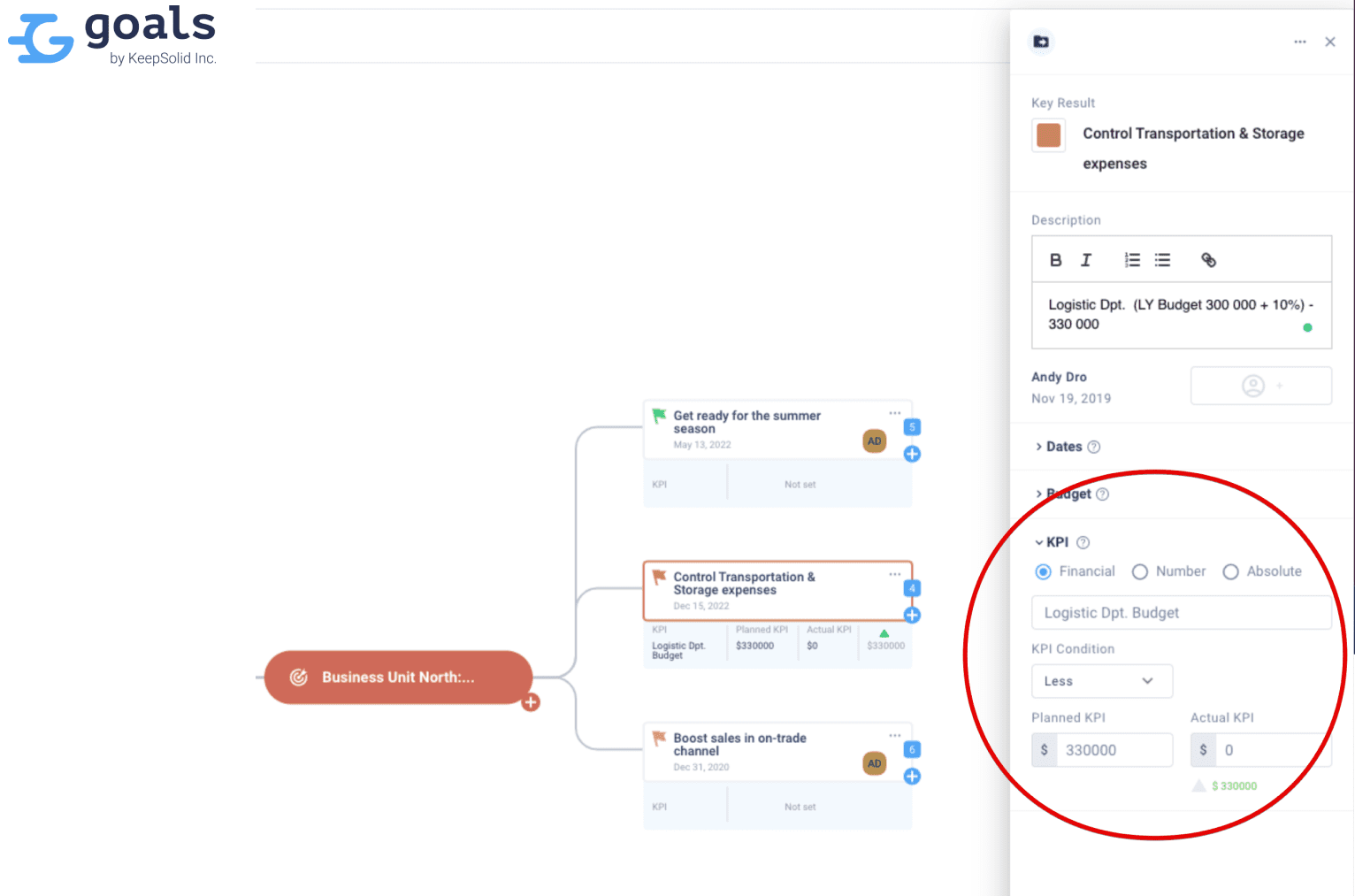Objectives and Key Results is an effective methodology focused on objectives. It helps to manage the company’s resources effectively and achieve business goals. This approach was designed in the 1980s by Andrew Grove, Chief Executive Officer at Intel, and helped to achieve great results.

Objectives Must Be Ambitious
To design and implement OKR effectively you need to set ambitious objectives. In this case, even partial success is considered a good outcome. Buy your Key Results should be completed in full. Furthermore, they must be clear and easily understood. When setting correct Objectives and Key Results, your success is just a matter of time. The right performance of OKR lets your business use resources effectively and your team's potential at its maximum.
The OKR approach looks pretty easy to understand but hard to master. What issues may arise during the implementation of the OKR? How to use it in product roadmap software? Let’s figure this out.
Possible Issues In OKR Implementation
Break from reality
A common mistake in product planning is incorrect assessment and interpretation of reality. The person who designs Objectives and Key Results for his product strategy has to assess external business factors and internal resources correctly to avoid wishful thinking and false forecasting.
Rigidity
In today’s fast-changing world product companies need to stay flexible and consider possible changes when planning for the long term. In modern VUCA, unpredictable events with severe consequences happen to product management units more often.
Whatever objective the company sets, it has always a parallel goal - to increase its product strategy sustainability against unpredictable circumstances. Being flexible is a key to success in modern business. You can’t ignore the importance of adjusting your product strategy and rebuilding plans on the go to prevent big losses.
Problems with motivation
Challenges and unpredictable events happen to any business and any human in general. The one who finds enough motivation to overcome them will be successful. Equipment, technologies or product road software are relative factors, but motivation and impulse are the absolute keys to success.
But how to motivate your product team? One of the core aspects of motivation is to ensure that all the members of the project understand the idea and know “who” to achieve the objective without big losses.
The best tool for this is to build the visual interpretation of the whole plan or strategy using a mind and roadmap. The first one allows you to mention all the Key Results toward the main objective and consider all the related factors. And the roadmap links the built hierarchy with the time factor.
How to develop an Objective Map with OKR
The best tool for any kind of planning is a map. It allows you to analyze all the circumstances, and obstacles, build a route and plan your resources. A good roadmap can be easily understandable by third parties and its readability is the best criterion of a roadmap’s quality. Any participant can assess the factors mentioned in the roadmap and follows all the connections toward the objective.
Using a roadmap as the main source of information on the project allows you to have a helicopter view, get the whole picture and analyze the complete variety of possibilities.

How to work with an Objective Roadmap:
- Set the Objective.
- Communicate with your product team to determine Key Factors as steps to achieve the main Objective.
- Figure out the key issues that can become a barrier on your way to the Objective.
- Define metrics that will describe your management success towards the main objective and link them to your Key Results.
- Discuss the created roadmap with your product team and agree to implement it during the project.
Tips and Tricks for Creating Objective Map
Form issues before making plans and management strategies
Comprehending the barriers on the path to the Objective is half the battle. Remember, new issues = new opportunities. “A competitor’s app is more stable and popular” is not an issue. When you formulate your question with “how” you will be destined for success. “How to make our product more popular and stable?” - that is the right question.
Follow the logic of cause and effect
A well-designed objective roadmap should answer the question “Why the Objective will be successful”. Do you remember Simon Sinek and his Golden Circle method? He explains the essential difference between questions “what” and “why”.
The answer to the “why” question involves the use of reasoning. This method allows you to get a more trustworthy and sharp objective roadmap.
Objective roadmap should express the logic, and connect all the important factors on it: Objective, Key Results, and Activities.
Clear and defined metrics will help to set clear Objectives and Key Results. The best way to do this is to define success metrics for all the factors. For example, the objectives of releasing a successful application or achieving 500,000 downloads in the App Store in Q3 are pretty different. The second one is more transparent for participants of the roadmap and its KPI metrics will be a clearer criterion. It is also more valuable for business as it describes what exact result is expected and in what terms.
The metrics of a successful product release are well known: 1) obtaining the planned amount of loyal users, 2) getting the expected revenue growth rates, 3) achieving a market fit, etc.
The working team is most interested in the following: 1) what should be done, 2) for what it should be done. And if the questions are asked in reverse order this can bring you even more. A product management team should first understand why they are working on the project and then what they should do.
Completeness
The content of the Objective Map is always the personal opinion of the author. The mindmap scheme is an individual thought of what the goal is, what aspects its success depends on, and what issues may arise along the way.
Shortly, we are considering the followings factors:
- Objective
- Key Results
- Understanding the issues to be solved
Finding the issues during the development of the Objective roadmap is quite important and it can affect setting the main Objective and formulating the Key Results. When all the members of the product team have answers to all the questions and they are sure that the objective will be achieved, the only thing left is to put all these on a timeline.
Developing a Roadmap with OKR
After you put all your ideas on the timeline the Objective roadmap turns into the Roadmap. Now you have a time factor and certain limits that you can not ignore. The miracle of Goals by KeepSolid is the fact that this application can do all these for you. Your Key Results and all the necessary activities will be clear and all the logic sequences will be understood.

Roadmap allows planning management activities considering the limit of resources. When the Key Results must be completed the product team always has to choose what task should be solved. With the help of the Roadmap, you will be prepared for such situations in the future.
The algorithm for working with the roadmap is:
- The whole objective tree and Key Results are available.
- Actions and changes can be mentioned on it if necessary.
- The product team understands the tasks, and time limits are fixed on the Roadmap.
- If the process goes wrong you will have instant feedback from the team member.
- Time and budget of the project can be easily tracked on the Roadmap.

Conclusion
Planning issues can be easily eliminated if you use a well-developed Objective Roadmap. The product team receives a helicopter view of all the tasks and understands the main Objective. The project becomes more flexible which is crucial in today’s fast-moving world. The project manager can keep a finger on the pulse and track the progress.
OKR approach explains the rules of the game and allows to solve all the issues that may arise during the planning. Due to OKR’s clarity and completeness, team communication is upgraded and routine management practices can be improved.



